Doctor Who: The Day Of Darkness
 The 30th episode of Doctor Who airs on the BBC. This is part four of the story now collectively known as The Aztecs.
The 30th episode of Doctor Who airs on the BBC. This is part four of the story now collectively known as The Aztecs.
More about Doctor Who in the LogBook
Order VWORP!1 from theLogBook.com Store
 The 30th episode of Doctor Who airs on the BBC. This is part four of the story now collectively known as The Aztecs.
The 30th episode of Doctor Who airs on the BBC. This is part four of the story now collectively known as The Aztecs.
More about Doctor Who in the LogBook
Order VWORP!1 from theLogBook.com Store
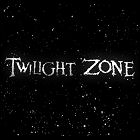 The 156th and final episode of Rod Serling’s The Twilight Zone airs on CBS. Mary Badham stars. The series will be revived at least once per decade, to varying degrees of success, beginning in the 1980s; Serling will return to TV with an anthology format series in the 1970s with Night Gallery.
The 156th and final episode of Rod Serling’s The Twilight Zone airs on CBS. Mary Badham stars. The series will be revived at least once per decade, to varying degrees of success, beginning in the 1980s; Serling will return to TV with an anthology format series in the 1970s with Night Gallery.
This series is not yet fully chronicled in the LogBook. You could help change that.
More about The Twilight Zone in the LogBook and theLogBook.com Store
The Twilight Zone now streaming on Paramount Plus
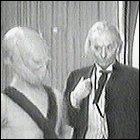 The 31st episode of Doctor Who airs on the BBC. This is part one of the story now collectively known as The Sensorites.
The 31st episode of Doctor Who airs on the BBC. This is part one of the story now collectively known as The Sensorites.
More about Doctor Who in the LogBook
Order VWORP!1 from theLogBook.com Store
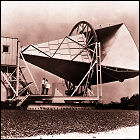 Using a 20-foot, horn-shaped receiver built at Bell Laboratories’ Holmdell, New Jersey facility for tests of the Echo-1 satellite in 1960, radio astronomers Arno Penzias and Robert Wilson stumble across the first sign of the Cosmic Microwave Background: a microwave signal indicating a 2.7 Kelvin background radiation emanating from every point in the universe, which Wilson and Penzias believe may be leftover radiation from the birth of the universe (confirming the “Big Bang theory” that had come about when astronomer Edwin Hubble discovered in the 1920s that the Doppler effect indicated that galaxies were moving away from each other). Though this monumental discovery will net the two a Nobel Prize for physics in 1978, Penzias and Wilson initially believe that the radiation is man-made or perhaps the result of pigeon droppings in the antenna interfering with their instruments!
Using a 20-foot, horn-shaped receiver built at Bell Laboratories’ Holmdell, New Jersey facility for tests of the Echo-1 satellite in 1960, radio astronomers Arno Penzias and Robert Wilson stumble across the first sign of the Cosmic Microwave Background: a microwave signal indicating a 2.7 Kelvin background radiation emanating from every point in the universe, which Wilson and Penzias believe may be leftover radiation from the birth of the universe (confirming the “Big Bang theory” that had come about when astronomer Edwin Hubble discovered in the 1920s that the Doppler effect indicated that galaxies were moving away from each other). Though this monumental discovery will net the two a Nobel Prize for physics in 1978, Penzias and Wilson initially believe that the radiation is man-made or perhaps the result of pigeon droppings in the antenna interfering with their instruments!
 The 32nd episode of Doctor Who airs on the BBC. This is part two of the story now collectively known as The Sensorites.
The 32nd episode of Doctor Who airs on the BBC. This is part two of the story now collectively known as The Sensorites.
More about Doctor Who in the LogBook
Order VWORP!1 from theLogBook.com Store
 The 33rd episode of Doctor Who airs on the BBC. This is part three of the story now collectively known as The Sensorites.
The 33rd episode of Doctor Who airs on the BBC. This is part three of the story now collectively known as The Sensorites.
More about Doctor Who in the LogBook
Order VWORP!1 from theLogBook.com Store
 The 34th episode of Doctor Who airs on the BBC. This is part four of the story now collectively known as The Sensorites.
The 34th episode of Doctor Who airs on the BBC. This is part four of the story now collectively known as The Sensorites.
More about Doctor Who in the LogBook
Order VWORP!1 from theLogBook.com Store
 The 35th episode of Doctor Who airs on the BBC. This is part five of the story now collectively known as The Sensorites.
The 35th episode of Doctor Who airs on the BBC. This is part five of the story now collectively known as The Sensorites.
More about Doctor Who in the LogBook
Order VWORP!1 from theLogBook.com Store
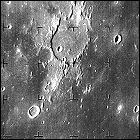 NASA launches the Ranger 7 lunar probe, built by Jet Propulsion Laboratory and intended to go directly to the moon, transmitting pictures of the surface back to Earth until it impacts the lunar surface. Months of building system redundancies into the Ranger spacecraft have made this vehicle more likely to carry out its mission, and it becomes the first of the Ranger probes to reach the moon with its eyes open. Pictures are transmitted back to Earth as Ranger 7 plunges into the lunar surface near the Ocean of Storms, with photo resolution exceeding expectations. One of the ground controllers at JPL breaks open a jar of peanuts during Ranger 7’s final approach to the moon, starting a JPL tradition that lasts to this day.
NASA launches the Ranger 7 lunar probe, built by Jet Propulsion Laboratory and intended to go directly to the moon, transmitting pictures of the surface back to Earth until it impacts the lunar surface. Months of building system redundancies into the Ranger spacecraft have made this vehicle more likely to carry out its mission, and it becomes the first of the Ranger probes to reach the moon with its eyes open. Pictures are transmitted back to Earth as Ranger 7 plunges into the lunar surface near the Ocean of Storms, with photo resolution exceeding expectations. One of the ground controllers at JPL breaks open a jar of peanuts during Ranger 7’s final approach to the moon, starting a JPL tradition that lasts to this day.
 The 36th episode of Doctor Who airs on the BBC. This is part six of the story now collectively known as The Sensorites.
The 36th episode of Doctor Who airs on the BBC. This is part six of the story now collectively known as The Sensorites.
More about Doctor Who in the LogBook
Order VWORP!1 from theLogBook.com Store
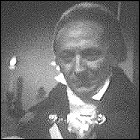 The 37th episode of Doctor Who airs on the BBC. This is part one of the story now collectively known as The Reign Of Terror.
The 37th episode of Doctor Who airs on the BBC. This is part one of the story now collectively known as The Reign Of Terror.
More about Doctor Who in the LogBook
Order VWORP!1 from theLogBook.com Store
 The 38th episode of Doctor Who airs on the BBC. This is part two of the story now collectively known as The Reign Of Terror.
The 38th episode of Doctor Who airs on the BBC. This is part two of the story now collectively known as The Reign Of Terror.
More about Doctor Who in the LogBook
Order VWORP!1 from theLogBook.com Store
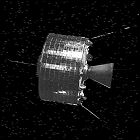 NASA launches the experimental, Hughes Aircraft-built communications satellite Syncom 3 into a geostationary orbit, the first human-made satellite to occupy that orbit. Much like Syncom 2, Syncom 3 is capable of handling two-way telephone calls, as well as teletype and fax transmissions. Placed in an orbit roughly over the International Date Line, Syncom 3 is instrumental in providing live TV coverage of the 1964 Summer Olympics from Tokyo to American television audiences, and the satellite’s technology is considerably upgraded compared to that of Syncom 2 in order to handle television transmission. Control of Syncom 2 is handed over to the Department of Defense in 1965 once NASA has completed its run of experimental communications tests.
NASA launches the experimental, Hughes Aircraft-built communications satellite Syncom 3 into a geostationary orbit, the first human-made satellite to occupy that orbit. Much like Syncom 2, Syncom 3 is capable of handling two-way telephone calls, as well as teletype and fax transmissions. Placed in an orbit roughly over the International Date Line, Syncom 3 is instrumental in providing live TV coverage of the 1964 Summer Olympics from Tokyo to American television audiences, and the satellite’s technology is considerably upgraded compared to that of Syncom 2 in order to handle television transmission. Control of Syncom 2 is handed over to the Department of Defense in 1965 once NASA has completed its run of experimental communications tests.
 The 39th episode of Doctor Who airs on the BBC. This is part three of the story now collectively known as The Reign Of Terror.
The 39th episode of Doctor Who airs on the BBC. This is part three of the story now collectively known as The Reign Of Terror.
More about Doctor Who in the LogBook
Order VWORP!1 from theLogBook.com Store
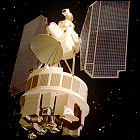 NASA and the United States Weather Bureau launch the first test article of the next-generation weather satellite, Nimbus-1. Using the more advanced camera technology (including infrared filters to watch cloud motion even on Earth’s night side) tested aboard TIROS-8, Nimbus-1 provides a vast improvement on satellite weather observations over the hardware on the TIROS experimental satellites. The first Nimbus satellite remains in service for only a month; later Nimbus satellites continue to be launched into service well into the late 1970s, and most of them remain operational into the 1980s.
NASA and the United States Weather Bureau launch the first test article of the next-generation weather satellite, Nimbus-1. Using the more advanced camera technology (including infrared filters to watch cloud motion even on Earth’s night side) tested aboard TIROS-8, Nimbus-1 provides a vast improvement on satellite weather observations over the hardware on the TIROS experimental satellites. The first Nimbus satellite remains in service for only a month; later Nimbus satellites continue to be launched into service well into the late 1970s, and most of them remain operational into the 1980s.
 The 40th episode of Doctor Who airs on the BBC. This is part four of the story now collectively known as The Reign Of Terror. This episode is missing from the BBC archives.
The 40th episode of Doctor Who airs on the BBC. This is part four of the story now collectively known as The Reign Of Terror. This episode is missing from the BBC archives.
More about Doctor Who in the LogBook
Order VWORP!1 from theLogBook.com Store
 The 41st episode of Doctor Who airs on the BBC. This is part five of the story now collectively known as The Reign Of Terror. This episode is missing from the BBC archives.
The 41st episode of Doctor Who airs on the BBC. This is part five of the story now collectively known as The Reign Of Terror. This episode is missing from the BBC archives.
More about Doctor Who in the LogBook
Order VWORP!1 from theLogBook.com Store
 The 42nd episode of Doctor Who airs on the BBC. This is part six of the story now collectively known as The Reign Of Terror.
The 42nd episode of Doctor Who airs on the BBC. This is part six of the story now collectively known as The Reign Of Terror.
This episode completes the first season of Doctor Who.
More about Doctor Who in the LogBook
Order VWORP!1 from theLogBook.com Store
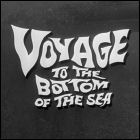 The first episode of Irwin Allen’s adventure series Voyage To The Bottom Of The Sea premieres on ABC, starring Richard Basehart and David Hedison, based on Allen’s 1961 movie of the same name. Eddie Albert guest stars in the series pilot, which was filmed in color, though the first season proper will be produced in black & white, and the pilot is broadcast in black & white as well.
The first episode of Irwin Allen’s adventure series Voyage To The Bottom Of The Sea premieres on ABC, starring Richard Basehart and David Hedison, based on Allen’s 1961 movie of the same name. Eddie Albert guest stars in the series pilot, which was filmed in color, though the first season proper will be produced in black & white, and the pilot is broadcast in black & white as well.
This series is not yet chronicled in the LogBook. You could help change that.
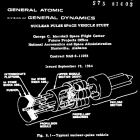 A report prepared by the Future Projects Office of NASA’s Marshall Spaceflight Center and General Atomic, the nuclear power division of General Dynamics, outlines in great detail ways that existing rocket technology (namely the Saturn V, which will not fly until 1967) and theoretical nuclear pulse propulsion technology could be combined to facilitate exploration of the moon and Mars. (Though derived from the Project Orion studies of the late 1950s, the potential nuclear-powered NASA program suggested in this document is not referred to as Orion.) The report, over 174 pages, goes into great detail about crew module design, radiation exposure, ways to mitigate the inevitable ablation of the “pusher plate” at the rear of the vehicle that will absorb a series of nuclear explosions at close range and translate the energy released into forward thrust, and even possible catastrophic launch abort modes, many of which would qualify as at least a small nuclear disaster. Even the health effects on civilian onlookers of a successful launch are considered, from retinal damage caused by viewing high-altitude firings of the nuclear propellant explosions to fallout risks, as well as potential collateral damage to satellites and non-hardened computers resulting from repeated electromagnetic pulses. The mission profiles considered are constrained to lunar missions and missions to Mars. (It’s worth noting that, by the time of this report’s issuance, the Nuclear Test Ban Treaty has been ratified by both the U.S. and the U.S.S.R., making it illegal to put nuclear pulse propulsion into practice.)
A report prepared by the Future Projects Office of NASA’s Marshall Spaceflight Center and General Atomic, the nuclear power division of General Dynamics, outlines in great detail ways that existing rocket technology (namely the Saturn V, which will not fly until 1967) and theoretical nuclear pulse propulsion technology could be combined to facilitate exploration of the moon and Mars. (Though derived from the Project Orion studies of the late 1950s, the potential nuclear-powered NASA program suggested in this document is not referred to as Orion.) The report, over 174 pages, goes into great detail about crew module design, radiation exposure, ways to mitigate the inevitable ablation of the “pusher plate” at the rear of the vehicle that will absorb a series of nuclear explosions at close range and translate the energy released into forward thrust, and even possible catastrophic launch abort modes, many of which would qualify as at least a small nuclear disaster. Even the health effects on civilian onlookers of a successful launch are considered, from retinal damage caused by viewing high-altitude firings of the nuclear propellant explosions to fallout risks, as well as potential collateral damage to satellites and non-hardened computers resulting from repeated electromagnetic pulses. The mission profiles considered are constrained to lunar missions and missions to Mars. (It’s worth noting that, by the time of this report’s issuance, the Nuclear Test Ban Treaty has been ratified by both the U.S. and the U.S.S.R., making it illegal to put nuclear pulse propulsion into practice.)
 The second episode of Irwin Allen’s adventure series Voyage To The Bottom Of The Sea airs on ABC, starring Richard Basehart and David Hedison, based on Allen’s 1961 movie of the same name. Hurd Hatfield guest stars.
The second episode of Irwin Allen’s adventure series Voyage To The Bottom Of The Sea airs on ABC, starring Richard Basehart and David Hedison, based on Allen’s 1961 movie of the same name. Hurd Hatfield guest stars.
This series is not yet chronicled in the LogBook. You could help change that.
 ABC airs the 34th episode of Leslie Stevens’ anthology series The Outer Limits. The episode is notable for a confluence of future Star Trek actors, including William Shatner, Malachi Throne, and Lawrence Montaigne.
ABC airs the 34th episode of Leslie Stevens’ anthology series The Outer Limits. The episode is notable for a confluence of future Star Trek actors, including William Shatner, Malachi Throne, and Lawrence Montaigne.
This series is not yet fully chronicled in the LogBook. You could help change that. More about The Outer Limits in the LogBook and theLogBook.com Store
The Outer Limits now streaming on Amazon Prime
 The third episode of Irwin Allen’s adventure series Voyage To The Bottom Of The Sea airs on ABC, starring Richard Basehart and David Hedison, based on Allen’s 1961 movie of the same name. Lloyd Bochner guest stars.
The third episode of Irwin Allen’s adventure series Voyage To The Bottom Of The Sea airs on ABC, starring Richard Basehart and David Hedison, based on Allen’s 1961 movie of the same name. Lloyd Bochner guest stars.
This series is not yet chronicled in the LogBook. You could help change that.
 ABC airs the 35th episode of Leslie Stevens’ anthology series The Outer Limits. Peter Lind Hayes and Joan Freeman star.
ABC airs the 35th episode of Leslie Stevens’ anthology series The Outer Limits. Peter Lind Hayes and Joan Freeman star.
This series is not yet fully chronicled in the LogBook. You could help change that. More about The Outer Limits in the LogBook and theLogBook.com Store
The Outer Limits now streaming on Amazon Prime
 The fourth episode of Irwin Allen’s adventure series Voyage To The Bottom Of The Sea airs on ABC, starring Richard Basehart and David Hedison, based on Allen’s 1961 movie of the same name. Rita Gam and Alejandro Rey guest star.
The fourth episode of Irwin Allen’s adventure series Voyage To The Bottom Of The Sea airs on ABC, starring Richard Basehart and David Hedison, based on Allen’s 1961 movie of the same name. Rita Gam and Alejandro Rey guest star.
This series is not yet chronicled in the LogBook. You could help change that.
 ABC airs the 36th episode of Leslie Stevens’ anthology series The Outer Limits. Skip Homeier and James Doohan (Star Trek, Jason Of Star Command) star.
ABC airs the 36th episode of Leslie Stevens’ anthology series The Outer Limits. Skip Homeier and James Doohan (Star Trek, Jason Of Star Command) star.
This series is not yet fully chronicled in the LogBook. You could help change that. More about The Outer Limits in the LogBook and theLogBook.com Store
The Outer Limits now streaming on Amazon Prime
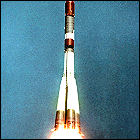 The Soviet Union launches the first of its next-generation manned spacecraft, the roomier Voskhod 1 capsule. Cosmonauts Dr. Boris Yegorov, Dr. Konstantin Feoktistov and Vladimir Komarov become the first three-man crew in space, though they find that the larger vehicle is still cramped for a crew of that size; the tight fit makes no allowances for spacesuits, which also makes the Voskhod 1 crew the first “shirtsleeves” space flight. Voskhod 1 spends just over one day in orbit before reentering the atmosphere; for the first time, the crew lands inside the capsule, rather than ejecting and parachuting down after reentry.
The Soviet Union launches the first of its next-generation manned spacecraft, the roomier Voskhod 1 capsule. Cosmonauts Dr. Boris Yegorov, Dr. Konstantin Feoktistov and Vladimir Komarov become the first three-man crew in space, though they find that the larger vehicle is still cramped for a crew of that size; the tight fit makes no allowances for spacesuits, which also makes the Voskhod 1 crew the first “shirtsleeves” space flight. Voskhod 1 spends just over one day in orbit before reentering the atmosphere; for the first time, the crew lands inside the capsule, rather than ejecting and parachuting down after reentry.
 The fifth episode of Irwin Allen’s adventure series Voyage To The Bottom Of The Sea airs on ABC, starring Richard Basehart and David Hedison. David Opatoshu, John Milford, Jill Ireland, and Steve Inhat guest star in an episode written by Harlan Ellison. (The show’s script is credited to “Cord Wainer Bird”, a misspelling of the nom de plume Ellison infamously used to indicate that significant changes were made to his script.)
The fifth episode of Irwin Allen’s adventure series Voyage To The Bottom Of The Sea airs on ABC, starring Richard Basehart and David Hedison. David Opatoshu, John Milford, Jill Ireland, and Steve Inhat guest star in an episode written by Harlan Ellison. (The show’s script is credited to “Cord Wainer Bird”, a misspelling of the nom de plume Ellison infamously used to indicate that significant changes were made to his script.)
This series is not yet chronicled in the LogBook. You could help change that.
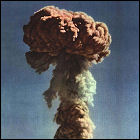 The People’s Republic of China detonates its first nuclear weapon, the 22-kiloton Project 596. Though the Chinese nuclear program did receive an early boost from Soviet researchers, much of the research and production of Chinese nuclear weapons has taken place without outside help since the initiation of the Chinese nuclear weapons development program in 1959. Within three years of this test, China will have developed hydrogen bomb technology.
The People’s Republic of China detonates its first nuclear weapon, the 22-kiloton Project 596. Though the Chinese nuclear program did receive an early boost from Soviet researchers, much of the research and production of Chinese nuclear weapons has taken place without outside help since the initiation of the Chinese nuclear weapons development program in 1959. Within three years of this test, China will have developed hydrogen bomb technology.
 The sixth episode of Irwin Allen’s adventure series Voyage To The Bottom Of The Sea airs on ABC, starring Richard Basehart and David Hedison. Charles McGraw guest stars.
The sixth episode of Irwin Allen’s adventure series Voyage To The Bottom Of The Sea airs on ABC, starring Richard Basehart and David Hedison. Charles McGraw guest stars.
This series is not yet chronicled in the LogBook. You could help change that.